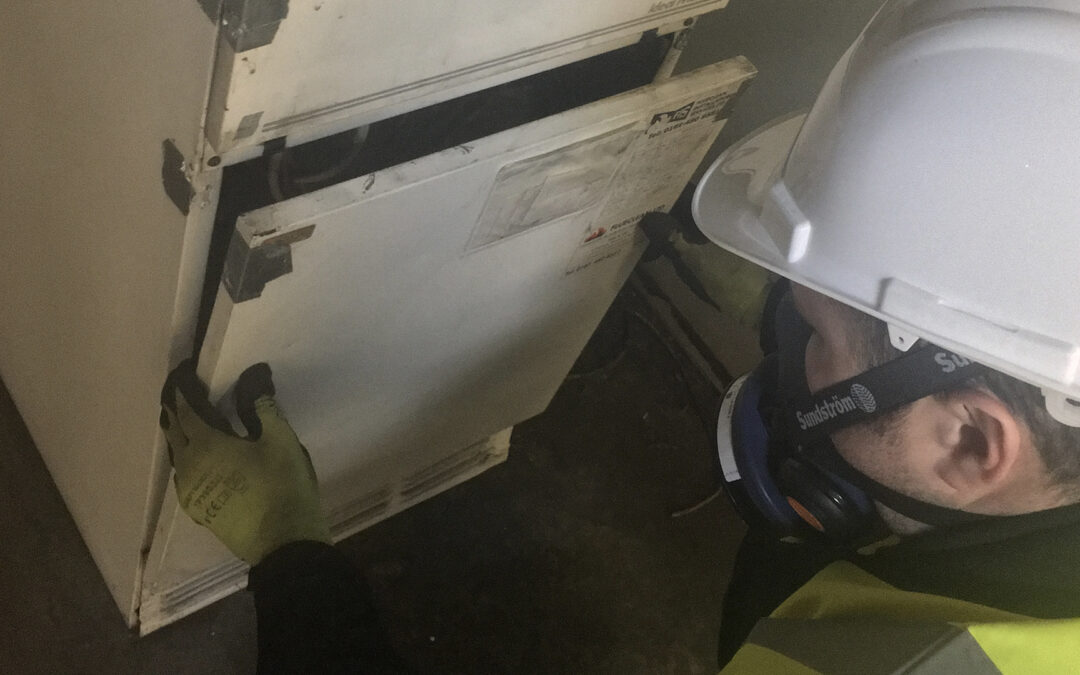The dangers of asbestos have been well documented, especially since the ban on all asbestos types in 1999. This ban from the UK government means that any homes built after the year 2000 are highly unlikely to contain asbestos-containing materials (also known as ACMs), however, the risk is never obsolete.
Homes built before this time have a greater likelihood of asbestos being present and therefore if you are planning any renovations (large or small) on an older property, it is advised that you understand where asbestos may be in your home and how you can identify it.
The dangers of asbestos in your home
It is a common misconception that asbestos materials, when left undisturbed in situ, are extremely dangerous. However, it is when these become disturbed in some capacity that they become a danger to your health.
ACMs, once disturbed, can release asbestos fibres into the air. These are then breathed in by anyone in your home or on a building site and can become dangerous. It is not always possible to know if asbestos fibres have been inhaled as they are not visible to the naked eye and they do not have any immediate side effects.
Asbestos fibres have been long associated with a number of serious health conditions, for example lung cancers, mesothelioma and asbestosis. In some rarer cases, the fibres can make their way into other organs within your body such as the stomach and colon.
The severity of asbestos exposure is relative to a number of factors, such as: the length of time you were exposed, how much asbestos and how it was ingested.
How asbestos may become disturbed
In both domestic and commercial properties, such as homes, schools, hospitals and office buildings, asbestos fibres are most commonly disturbed when renovation or maintenance works are undertaken. This is because these works can disturb the ACMs and, as we have mentioned, this is when the fibres become threatening to health.
Some frequent occurrences can include drilling into an asbestos insulating board, removal of vinyl floor tiles or scraping off an artex ceiling. Any work taking place to convert or update an attic can also cause issues if materials such as asbestos insulation or pipe covers are damaged.
Common areas to find asbestos
The Health and Safety Executive (HSE) have a comprehensive list of the most common areas asbestos is found, in both industrial and residential properties. We would highly recommend visiting this page if you feel asbestos is present in your property.
The most common areas to find asbestos in a residential include:
- Asbestos cement products, for example corrugated sheeting for garages.
- Asbestos insulating board products
- Artex ceilings and walls
- Vinyl floor tiles
The most common areas to find asbestos in an industrial property include:
- Insulation
- Lagging on boilers and pipes
- Asbestos insulating board products
- Sprayed coatings on ceilings and structural steels
Identifying asbestos in my home
If you feel like asbestos may have been discovered in your home, you must hire a professional asbestos consultancy company to correctly identify and manage asbestos safely. You must not try and remove asbestos-containing materials yourself with no prior knowledge or expertise.
Pillars Environmental are professional asbestos consultants who can undertake detailed asbestos surveys, asbestos management plans and removal management to ensure that the safety of all involved is preserved.
For advice on how to proceed if you feel you have ACMs present in your home, and a free quote, get in touch using the link below.

